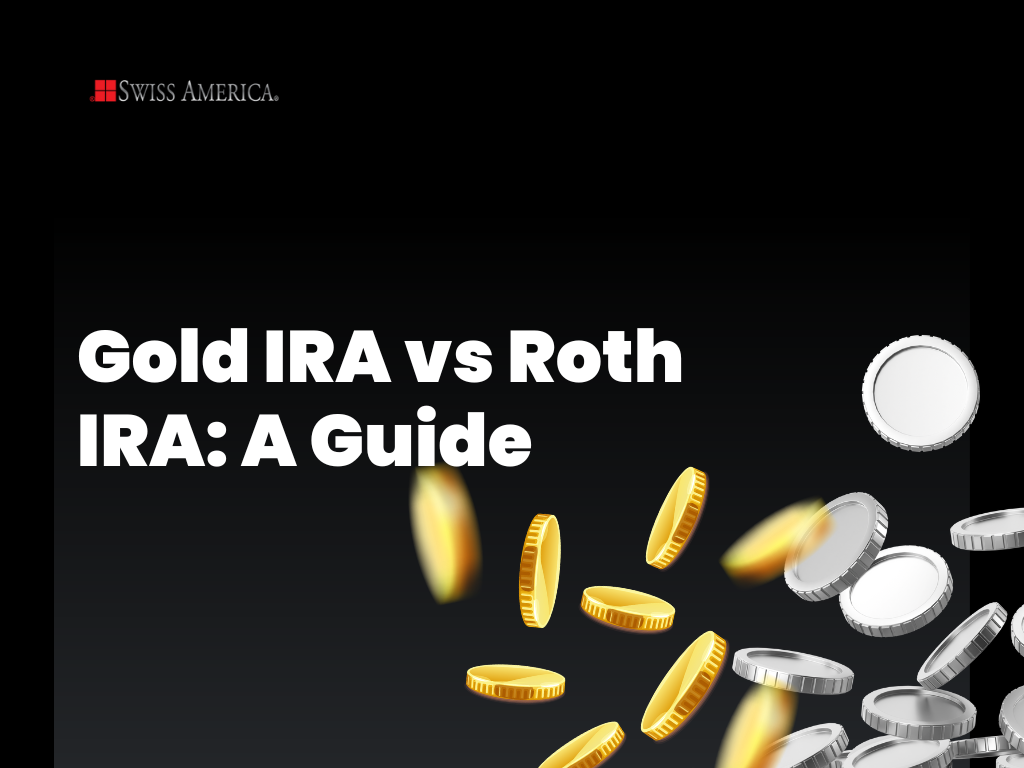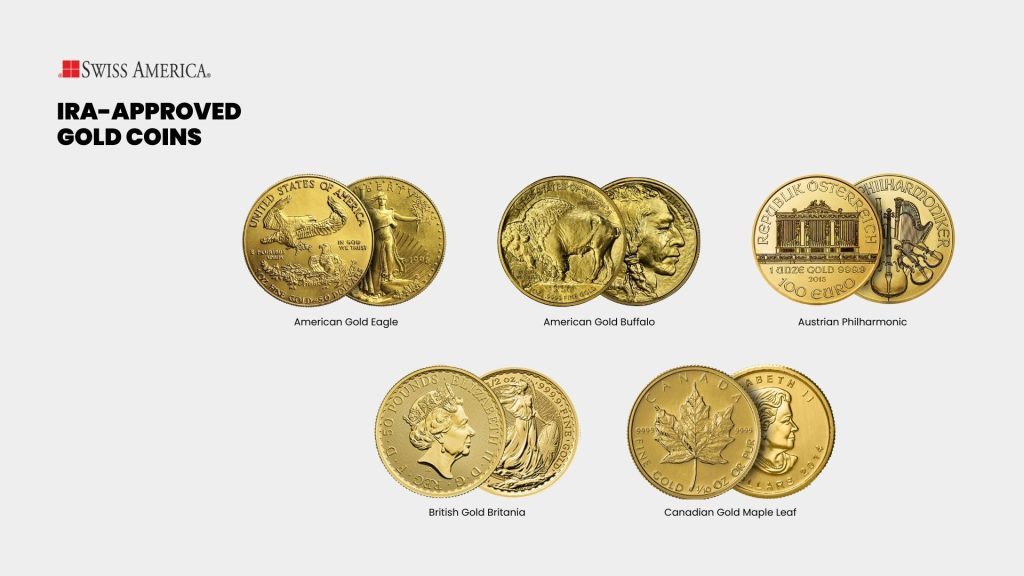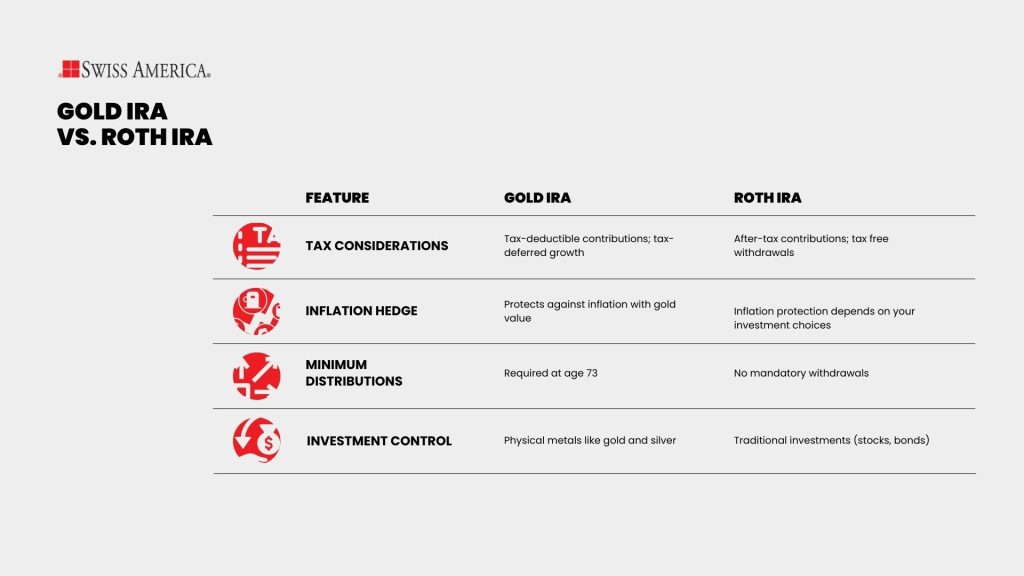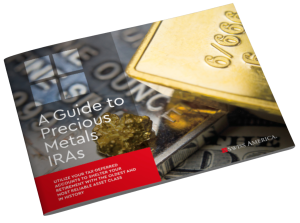
Are you considering a Gold IRA vs Roth IRA for your retirement strategy? Both options offer valuable ways to grow and protect your wealth.
A Gold IRA lets you invest in physical precious metals, while a Roth IRA provides tax-free growth for your retirement savings. But how do these accounts compare, and which one aligns best with your financial goals?
In this article, we’ll explore the key differences between these retirement accounts. The good news? You can choose both to diversify your investments and include gold as part of your strategy.
Overview of Gold IRA
A Gold IRA is a retirement account that allows you to purchase physical gold and other precious metals as part of your long-term investment strategy. It protects against economic uncertainty and offers an alternative to traditional IRAs that focus only on stocks, bonds, and mutual funds.
You may also hear people refer to these accounts as a precious metals IRA or silver IRA.
IRS approval and regulations
Gold IRAs fall under specific IRS rules to maintain their tax-advantaged status. These include using a Gold IRA custodian to manage your funds. They handle reporting, compliance, and secure storage of your metals until you reach retirement age of 59.5.
If you decide to set up a Gold IRA, you’ll open an account with the custodian, transfer your funds, and then direct the custodian to buy or sell gold and other precious metals on your behalf.
Investment options
One of the key regulations is around which metals are eligible for these accounts. You can hold precious metals coins or bars that meet this criteria:
Metals: The IRS approves gold coins and bars and other metals like silver, platinum, and palladium.
Purity: Gold needs to be 99.5% pure, silver 99.9% pure, and platinum and palladium both 99.95% pure.
Manufacturer: You can buy bars from manufacturers like PAMP Suisse and Royal Canadian Mint.
As an example, common gold coins include:
- American Gold Eagle
- American Gold Buffalo
- Austrian Philharmonic
- British Gold Britannia
- Canadian Gold Maple Leaf

Precious metals dealers like Swiss America can help you with the full list of qualified metals you can include in gold or Silver IRAs.
Storage and security
IRS regulations require that that your custodian stores your metals in approved depositories. These third-party facilities protect your metals with advanced security systems and insurance policies.
Note that you cannot store the gold at home or in a bank safe until retirement because the IRS considers this a distribution.
Tax implications
Gold IRAs or precious metals IRAs provide the same tax advantages and structure options as other traditional retirement accounts.
You fund this account with pre-tax dollars, and the account value grows tax-deferred. Just like a traditional IRA, you pay income taxes when you go to make withdrawals in retirement. Also, this account type requires minimum distributions once you reach age 73.
You can add money to these accounts each year, which you might also be able to deduct. In 2025, the maximum amount you can add is $7,000 if you’re under 50 and $8,000 if you’re 50 and over.
Overview of Roth IRA
A Roth IRA is also a retirement account for long-term savings that gives you special tax advantages. You contribute after-tax dollars to this account structure. This gives you tax-free withdrawals in retirement as long as you’ve held the account for at least five years.
Contribution limits
The IRS sets annual contribution limits for Roth IRAs. These limits vary based on your age and income. For 2025, the maximum contribution is $7,000 if you’re under 50 and $8,000 if you’re 50 or older.
The caveat is that the IRS restricts your ability to contribute based on your Modified Adjusted Gross Income (MAGI), which is your adjusted gross income (AGI) with certain deductions added back in.
For 2025:
Single filers: Cannot contribute if MAGI is $165,000 or more.
Married filing jointly: Cannot contribute if MAGI is $246,000 or more.
Tax benefits
Your contributions to a Roth IRA aren’t tax-deductible, but the account’s growth and qualified withdrawals are completely tax-free. You can always withdraw your original contributions at any time without taxes or penalties.
Roth IRAs also don’t require minimum distributions, so your money can grow indefinitely. You can also pass on the account to your heirs tax-free.
Investment flexibility
You can invest in traditional options like stocks and bonds through these accounts. If you want to hold gold paper assets, you can invest in gold stocks or ETFs through your Roth account. But they don’t allow you to hold physical gold as a direct investment.
Comparing Gold IRA and Roth IRA
If you’re trying to decide which retirement account is best, you’ll want to consider factors like taxes, inflation protection, minimum distribution rules, and investment control.
Here’s a breakdown of how Gold IRAs and Roth IRAs compare in these areas.
Tax considerations
Gold IRA
Contributions are tax-deductible, and the account grows tax-deferred until you withdraw funds. This is beneficial if you expect to be in a lower tax bracket during retirement.
Roth IRA
These retirement accounts get funded with after-tax dollars, so there’s no immediate tax break. However, all qualified withdrawals are tax-free in retirement, making it ideal if you expect to earn more later on.
Inflation hedge
Gold IRA
Gold is known for maintaining its value during times of inflation. This is because gold is scarce and has actual physical value. People see it as a hedge against the effects of inflation and can help protect your retirement funds from losing value.
Roth IRA
Roth IRAs can hold a mix of traditional investments but these don’t always provide protection against inflation. The level of protection depends on how well the investments in your account perform.
Minimum distributions
Gold IRA
At age 73, you must start taking minimum distributions from your Gold IRA, even if you don’t need the funds. This rule can affect your retirement planning.
Roth IRA
Roth IRAs don’t have mandatory withdrawals, so you have more flexibility over how you want to handle your retirement account funds.
Investment control
Gold IRA
Gold IRA investing allows you to buy IRS-approved physical precious metals like gold, silver, and platinum to diversify your retirement savings.
Roth IRA
Roth IRAs also offer control, but they focus on traditional investments like stocks and bonds. To include assets like gold, you’d need to roll over to a self-directed Roth Gold IRA.

Considerations for investors
To make a decision on which retirement account is the right option, here are key considerations:
Risk tolerance
Gold IRA: Gold IRAs or precious metals IRAs are a good option if you want stability and protection during economic uncertainty. Gold and silver may hold their value during inflation or financial crises. A drawback is that they don’t provide passive income like dividends, and their prices can be unpredictable in the short term.
Roth IRA: Roth IRAs include traditional paper asset investments like stocks and bonds, which can grow more over time but are more affected by market downturns. Diversifying your Roth IRA with inflation-resistant assets can balance risks while maintaining growth opportunities.
Long-term goals
Gold IRA: If protecting your wealth is your priority, a Gold IRA is an excellent option. Gold gives you a way to reduce risks because its value usually moves independently of the stock market.
Roth IRA: If your goal is to grow your savings and enjoy tax-free income in retirement, this retirement account type might be a better fit. It lets your investments grow tax-free, and you can withdraw money without penalties once you meet the requirements.
Financial situation
Gold IRA: This is a traditional IRA that invests in physical gold with pre-tax contributions, which lowers your taxable income now. However, you’ll pay taxes on withdrawals in retirement. There are also additional costs like custodian fees and storage costs for your physical metals to factor into your budget.
Roth IRA: Contributions to a Roth IRA are made with after-tax money, so you won’t receive an immediate tax break. However, withdrawals in retirement are tax-free. Roth IRAs also have additional costs like investment fund fees and transaction fees.
Using both Gold and Roth IRAs
Many investors choose to have both accounts as part of a diversified strategy. Here’s a few details if you decide to go this route:
Contribution limits: The IRS annual contribution limits apply across all of your IRA accounts combined. Keep this in mind as you decide whether to purchase gold or add more stocks and bonds to your IRAs.
Separate custodians: You’ll have different custodians for each account and each has its own set of fees. For your precious metal IRA, shop around and compare custodian account fees to reduce your administrative costs.
Diversification: Combining a Gold IRA and a Roth IRA diversifies your portfolio. Holding physical metals helps offset stock market risks, even if managing both accounts adds some complexity.
Gold IRA Companies
Choosing the right precious metals dealer is key to a successful investment. Swiss America has over 40 years of experience guiding investors through market changes. Thousands of satisfied clients trust us for our reliable service, expert advice, and transparent pricing.
Take advantage of our educational resources to learn about setting up precious metal IRAs, market trends, and the benefits of gold and other precious metals.
Our online tools also make it easy to track investments, and our gold trade program gives you the flexibility to sell back anytime.
Gold in IRA
Understanding the differences between a Gold IRA and a Roth IRA can help you make the best decision for your retirement goals. Both options have benefits and you can even use them together to create a balanced strategy for growth and security.
If you’re ready to explore how a Gold IRA can support your financial future, request our free Gold IRA kit to learn more about your options and take the next step in securing your retirement!
Gold IRA vs Roth IRA: FAQs
Is a gold IRA better than a Roth IRA?
It depends on your financial goals. A gold IRA or precious metal IRA focuses on physical assets like gold, which can hedge against inflation, while a Roth IRA offers tax-free growth on various investments, such as stocks or mutual funds.
What is the best precious metal in IRA?
People usually prefer Gold because of its stability and value retention. However, depending on market trends and your diversification needs, silver, platinum, and palladium can also be good choices.
How does a gold IRA work?
A Gold IRA functions like a regular IRA, but instead of holding stocks or bonds, it holds physical gold or other precious metals. You set up the account with a custodian who buys metals on your behalf and stores them in a secure facility. Depending on whether it’s a Traditional or Roth Gold IRA, your investment grows tax-deferred or tax-free.
Note: The information in this post is for informational purposes only and should not be considered tax or legal advice. Please consult with your own tax professionals before making any decisions or taking action based on this information.
